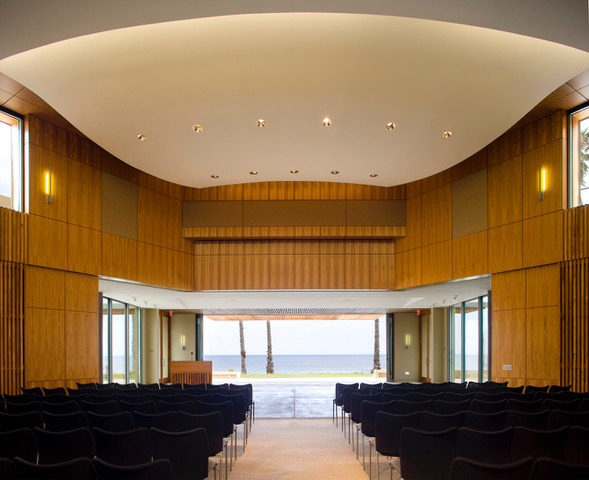
Institutional Seminar Series
(in person)
Tuesday, April 2nd, 2024
at Scripps Seaside Forum Auditorium
12 p.m. Talks begin w/ Q&A
Pizza to be served after, will have vegan and gluten free options
-------------------------
Title: Observing and understanding the ocean with inverse techniques
Abstract: Inverse techniques are quintessential in science and probably the single piece of methodology that fascinates me the most. In this talk, I will show two seemingly different ways in which they are used: 1) used to observe the ocean through ocean acoustic tomography, and 2) used to understand the ocean better through data assimilation. In 1) a tomographic array was used as a giant instrument to measure the sound speed in the water and test the sound speed equation. In 2) assimilation of velocity data recorded in the Yucatan Channel improves the estimation of the circulation in the Gulf of Mexico and highlights some of the processes at play.
Bio: Heriberto Vazquez is an assistant research scientist in the Institute of Geophysics and Planetary Physics (IGPP) division at Scripps Institution of Oceanography. He is part of the Acoustic Oceanography Group, which is interested in using sound to measure the properties of the ocean. The objective is to implement an observational system and provide information to constrain ocean models.
Title: Antarctica’s Blind Spot: Progress and Prospects for Investigating Ice-Ocean Interactions on Antarctica’s Continental Shelf
Abstract: Intrusions of deep warm ocean water drive rapid melting beneath several ice shelves around the coast of Antarctica. However, numerical ocean circulation models are presently unable to reproduce observed peak melt rates, a problem limiting our ability to accurately predict glacier retreat and sea level rise. The discrepancy is probably due to a combination of oversimplified boundary conditions and model parameters and missing processes; unfortunately, progress has been slow due to the difficulty of navigating Antarctica’s continental shelf to acquire the data needed to tune and validate numerical models. Oceanographic and geophysical data are needed where even the most capable research icebreakers are unable to access and beyond the reach of today’s most advanced autonomous underwater vehicles. To address this problem, the SIO Polar Geophysics Laboratory has formed new collaborations with the Australian, Chinese, French, Japanese, and Korean Antarctic programs to use aircraft-deployed ocean sensors and remote sensing observations over and adjacent to ice shelves in East and West Antarctica. This presentation aims to review these efforts and introduce recent innovations at SIO that we believe will be central to illuminating Antarctica’s coastal frontier.
Bio: Dr. Jamin Stevens Greenbaum is an Assistant Research Geophysicist in the Institute of Geophysics and Planetary Physics Division and the founder of SIO’s Polar Geophysics Laboratory (PGL). Research activities in the PGL utilize a variety of observational techniques and platforms (especially airborne) and numerical models to investigate processes driving coastal glacier thinning and retreat. Greenbaum completed BS and MS degrees in Aerospace Engineering and a Ph.D. in Geophysics at the University of Texas at Austin and has conducted sixteen research trips to Antarctica and three to Greenland.
*Talks will not be recorded




